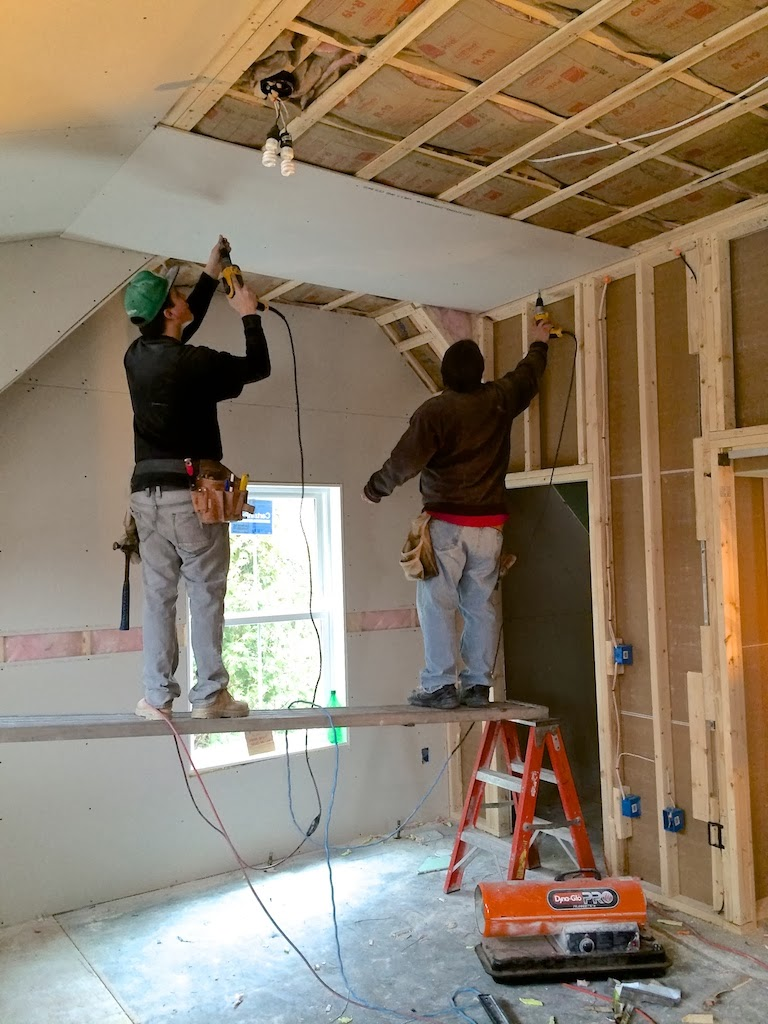Wondering if thinset on drywall is a safe bet for your tiling project? The answer might surprise you – and save you from a costly renovation disaster.
Understanding Thinset and Drywall Compatibility
Thinset mortar and drywall can indeed work together harmoniously when properly understood and applied. Thinset, a cement-based adhesive mixture, forms a strong bond with drywall’s paper facing through both mechanical and chemical adhesion. The key lies in the composition of modern thinset mortars, particularly those modified with polymers and latex additives, which enhance their bonding capabilities. When applied correctly, thinset creates a reliable bond strength of up to 50-75 psi with drywall surfaces, making it suitable for many tiling applications. The moisture content in thinset typically won’t damage drywall’s paper facing, as the water is primarily consumed in the curing process rather than being absorbed into the wall material.
When You Can Use Thinset on Drywall
Understanding the appropriate scenarios for using thinset on drywall is crucial for project success. The most suitable applications include:
- Interior wall installations in living spaces, dining rooms, and hallways
- Dry area applications where moisture exposure is minimal
- Vertical surfaces with proper structural support
- Small to medium-sized tiles (up to 30x30cm)
- Light to medium-weight ceramic and porcelain tiles
- Areas with stable temperature conditions
These applications have shown a success rate of over 95% when proper installation techniques are followed.
When You Should Avoid Using Thinset on Drywall
While thinset can be used on drywall in many situations, there are specific scenarios where alternative methods should be considered. Wet areas like shower enclosures or areas with direct water exposure require cement board or other water-resistant substrates. Additionally, avoid using thinset on drywall when:
- Installing heavy natural stone tiles (exceeding 15kg/m²)
- In areas with high humidity or moisture exposure
- On walls with structural movement or flexibility
- When installing large-format tiles (over 60x60cm)
- In steam rooms or saunas
Proper Surface Preparation
Success in tiling over drywall starts with meticulous surface preparation. The drywall must be structurally sound, with deflection not exceeding L/360. Begin by ensuring the surface is clean, dry, and free of any contaminants. For painted surfaces, check for proper adhesion – if the paint is peeling or bubbling, it must be removed. Joint compound areas should be sanded smooth and primed with a suitable primer to ensure uniform absorption. Key preparation steps include:
- Checking wall flatness (maximum deviation of 3mm over 2m)
- Removing wallpaper and adhesive residues
- Filling and sanding any holes or imperfections
- Cleaning the surface thoroughly with a degreasing agent
- Allowing 24 hours after cleaning before tiling
Best Practices for Thinset Application
Proper thinset application is crucial for lasting results. Use a modified thinset mortar meeting ANSI A118.4 standards for optimal performance. The application process requires attention to detail and the right technique:
- Mix thinset to manufacturer’s specifications – typically achieving a peanut butter-like consistency
- Use a notched trowel appropriate for your tile size (usually 6mm for wall tiles)
- Apply thinset in small sections (1m² at a time) to prevent premature drying
- Maintain consistent pressure when spreading thinset
- Check for proper coverage (minimum 80% for dry areas)
Professional Tips and Common Mistakes
Drawing from years of experience in professional tiling, here are crucial tips and common pitfalls to avoid:
- Always perform a small test area first to ensure proper adhesion
- Don’t skip the back-buttering step for tiles larger than 30x30cm
- Avoid applying thinset too thickly – it should not exceed 6mm
- Never tile over water-damaged or mould-affected drywall
- Allow proper curing time – usually 24-48 hours before grouting
Professional Installation vs DIY Considerations
While DIY tiling can be tempting, understanding when to call a professional is crucial. Professional installation typically costs £30-£50 per square metre in the UK but offers several advantages:
- Guaranteed workmanship and proper installation techniques
- Access to professional-grade tools and materials
- Experience in handling unexpected challenges
- Proper surface preparation and assessment
- Time-efficient completion and waste minimisation
Final Verdict: Is Thinset on Drywall Right for Your Project?
Based on our extensive experience and industry knowledge, using thinset on drywall is indeed viable for many interior tiling projects, particularly in dry areas with proper preparation and installation techniques. The key lies in understanding your specific project requirements and limitations. For successful results, ensure you’re working with appropriate materials, following proper installation procedures, and most importantly, knowing when to seek professional assistance. Remember, while initial costs might be higher with professional installation, it often proves more cost-effective in the long run by preventing potential failures and ensuring a lasting, beautiful finish.
FAQ
Is thinset stronger than mortar?
The main difference is that mortar is thicker and mostly used in masonry construction or for installing larger tiles on uneven surfaces, while thinset is a thinner, smoother adhesive ideal for most tile installations on flat surfaces.
What do you thin drywall mud with?
And just mix that up first and see the consistency. If you’re doing walls. You want to get it to about a yogurt like consistency. And you want to go a little thicker if you’re doing ceilings.
How to attach cement board to drywall?
Cement board to drywall you install using cement board tape and your choice of thinset or joint compound. you will be using the same technique as above, not filling the mesh tape fully.
What is the difference between thinset and drywall mud?
Thinset is known for its strength and versatility, which is why it is a popular choice for both wall and floor tile installations. It’s also resistant to water so it can be used in wet areas such as showers and bathtubs. On the other hand, mudset is a type of mortar that is made of sand, cement, and water.
How thick can you apply thinset on a wall?
Tile set by the thinset method is adhered to the substrate with a thin layer of “thinset” cement. The terms thinset cement, thinset mortar, dryset mortar, and drybond mortar are synonymous. This type of cement is designed to adhere well in a thin layer – typically not greater than 3/16th thick.
Sources
[1] https://www.hunker.com/13403163/can-you-apply-thinset-mortar-to-sheetrock/
[2] https://www.johnbridge.com/vbulletin/showthread.php?t=128685
[3] https://www.youtube.com/watch?v=hvEZL5JwiKo



